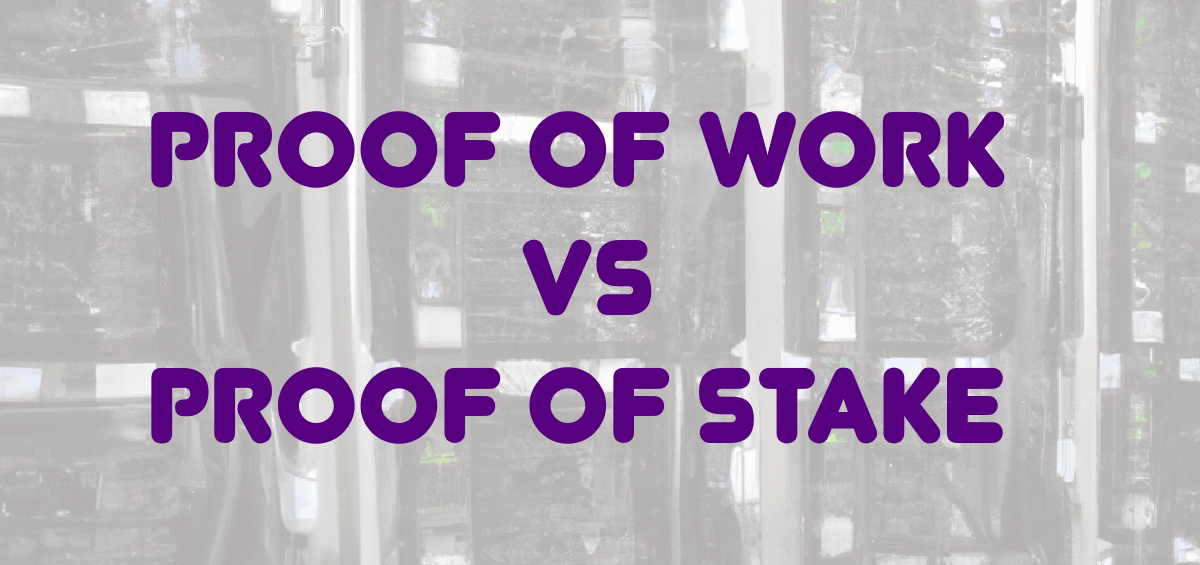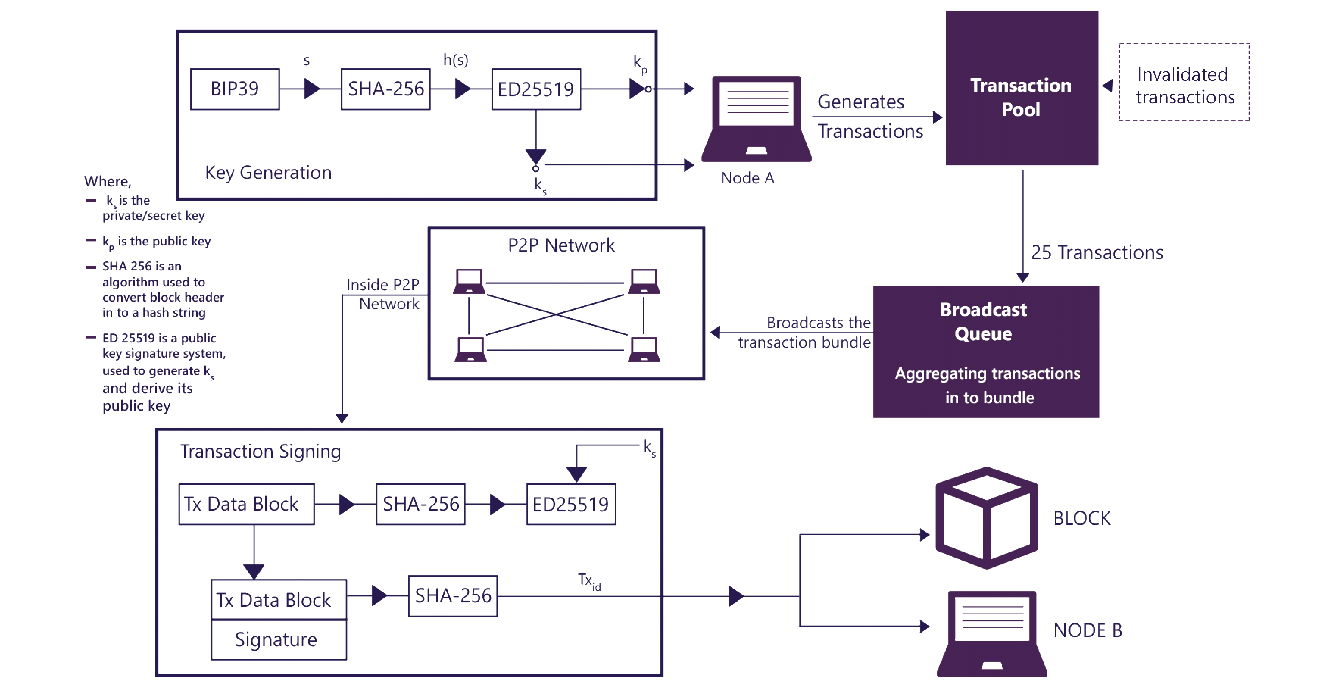
Proof of Work vs Proof of Stake is a topic of debate in the blockchain and cryptocurrency communities, as both have their own benefits and drawbacks. Proof of Work is seen as a more secure and decentralized method, as it requires a lot of computational power to attack the network. On the other hand, Proof of Stake is seen as more energy-efficient and scalable, as it does not require intensive computational power. The choice between PoW and PoS ultimately depends on the specific use case and goals of the blockchain network in question.
Blockchain technology operates on a decentralized network where transactions are recorded and verified by multiple participants. Cryptocurrencies follow a set of protocols and regulations that ensure their security and stability. The rules that govern the blockchain network and protect it from external threats such as hacking and cybercrime are known as consensus mechanisms or consensus algorithms.
Two of the most well-known cryptocurrencies in the blockchain space are Bitcoin and Ethereum. Both of these platforms utilize different consensus algorithms to regulate and validate transactions. Bitcoin uses the Proof of Work consensus mechanism, while Ethereum employs the Proof of Stake (PoS) algorithm.
The role of consensus algorithms like PoW and PoS is to ensure that the transactions added to the blockchain ledger are legitimate and secure, without the need for a central authority to verify them. It is crucial to understand the difference between Proof of Work vs Proof of Stake in order to have a deeper understanding of various blockchain platforms and cryptocurrencies.
What is Proof of Work?
Proof of Work (PoW) is the first consensus algorithm used in blockchain technology and was introduced by the first cryptocurrency, Bitcoin. However, the concept of PoW existed before its implementation in the blockchain space. PoW is a decentralized consensus algorithm that uses computational effort to prevent network corruption from malicious activities. In this system, members, often referred to as miners, solve complex mathematical problems to validate transactions and create new blocks, which are then added to the blockchain ledger.
PoW is commonly used in cryptocurrency mining, and Bitcoin operates on this consensus algorithm. Miners who solve the equations receive rewards in the form of the respective cryptocurrency, making it a profitable activity. PoW utilizes SHA-256 hash functions, providing a secure and robust mechanism for the peer-to-peer network, eliminating the need for a central authority.
However, PoW requires a significant amount of energy that increases with the growth of the network and the number of miners. This has led to the development of PoS as an alternative consensus algorithm. If you want to learn more about PoW, it is recommended to study the Bitcoin blockchain and understand how the Bitcoin network operates and its consensus algorithm in detail.
What is Proof of Stake?
Proof of Stake (PoS) is a consensus algorithm that operates differently from Proof of Work (PoW). In PoS, the miners with the most coins are responsible for approving transactions and creating new blocks. Unlike PoW, PoS is not based on computational power, but on the number of coins held by the miner. This makes PoS an eco-friendly alternative to PoW, as it reduces electricity consumption.
Ethereum is one of the prominent blockchain platforms that actively implements the PoS consensus mechanism. Other altcoins also use PoS, making it less susceptible to attacks from miners. Some experts consider PoS to be more secure than PoW, as the maximum stakeholder in the network has more power and control.
In PoS, the validators with the largest number of tokens are responsible for verifying transactions and adding them to the next block on the blockchain ledger. The number of coins held by a miner determines their power in the network. To have a better understanding of the PoS consensus algorithm, it is advisable to have a basic knowledge of Ethereum blockchain technology and how it operates.

What’s the Difference Between Proof of Work vs Proof of Stake?
Understanding the consensus algorithms in the blockchain world is crucial, and differentiating between Proof of Work vs Proof of Stake is the first step in that direction. These two consensus algorithms are the most widely used and have their own advantages and disadvantages. In this section, we will delve deeper into the differences between the two by considering several parameters.
The first and most significant parameter is energy consumption. PoW consensus algorithms require a massive amount of energy and electricity, making it an environmentally unfriendly option. In contrast, PoS consensus algorithms have low to moderate energy consumption, making it an eco-friendly alternative. This is because PoS depends on the currency power of the validators, unlike PoW, which relies on computational power.
Another key difference between Proof of Work vs Proof of Stake is the tools required for their implementation. PoW requires heavy equipment like computers with GPUs and hard drives to perform the mining operations efficiently. On the other hand, PoS does not require any specialized equipment, and the validation process does not involve complex activities, thus making it less resource-intensive. In terms of security, PoW offers high security as the miners have to solve complex mathematical problems to validate transactions, whereas PoS also creates a secure network but the security remains untested in several cases. Finally, in PoW, the rewards are given to the first miner who solves the equation, while in PoS, the validators receive the transaction fees instead of block or coin rewards.
- Energy Consumption: One of the main differences between Proof of Work vs Proof of Stake is energy consumption. PoW requires a massive amount of energy and electricity to perform mining operations, whereas PoS has low to moderate energy consumption. The need for high energy consumption in PoW makes it environmentally unfriendly, whereas PoS is considered more eco-friendly.
- Tools Required: To perform mining operations in PoW, high-end computers with powerful GPU and hard drives are required. These computers must have high computational efficiency to perform these operations. In contrast, PoS does not require any heavy equipment or powerful computers, as it does not require complex mining operations.
- Security: In terms of security, PoW offers high security as the miners must solve complex mathematical problems or hash functions to create or validate new blocks. This mechanism creates a secure network, but it also requires high energy consumption. PoS also creates a secure network and locks the cryptocurrency, but its security remains untested at times.
- Rewards: PoW rewards the first miner who solves the equation with a certain amount of cryptocurrency. The rewards in PoW are in the form of the cryptocurrency used in that particular blockchain network. PoS does not offer block or coin rewards, but the validators receive transaction fees instead. This change eliminates the need for high energy consumption and creates a more energy-efficient network.
Proof of Work vs Proof of Stake in 2023
Some industry experts predict that PoS might become more popular than PoW due to its low energy consumption, cost-effectiveness, and eco-friendliness. The trend of using PoS is growing in the cryptocurrency industry as it requires lesser computational power compared to PoW. Additionally, the rise in awareness of environmental issues is also driving the adoption of PoS.
Proof of Work is still widely used, especially in the Bitcoin network, and is considered highly secure due to its complex computational functions. However, its high energy consumption continues to be a significant drawback, and there is a growing concern about the carbon footprint of the PoW consensus mechanism.
When comparing Proof of Work vs Proof of Stake we can see that both have their advantages and disadvantages, and the choice of consensus mechanism will depend on various factors such as the specific requirements of the blockchain platform, the goals of the network, and the priorities of the stakeholders. It is very possible possible that there is no winner in Proof of Work vs Proof of Stake competition as both PoW and PoS will co-exist in the future, with each being used in specific cases where it is the most suitable.
